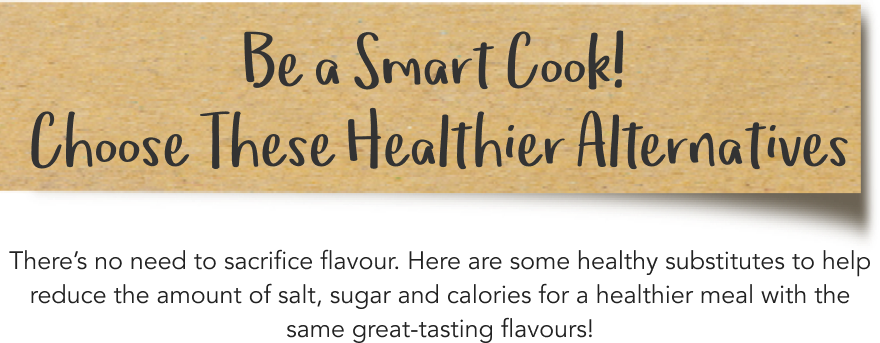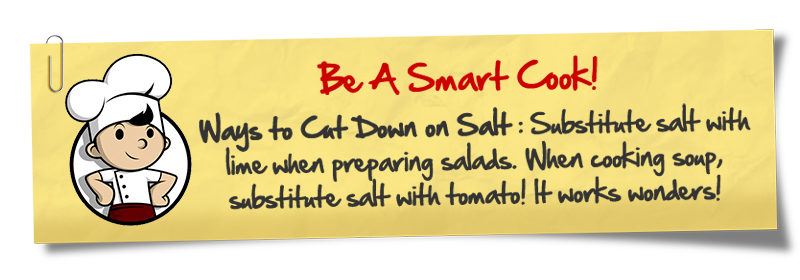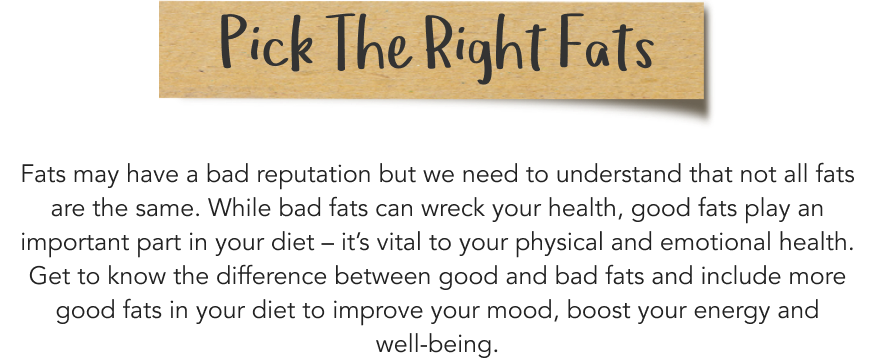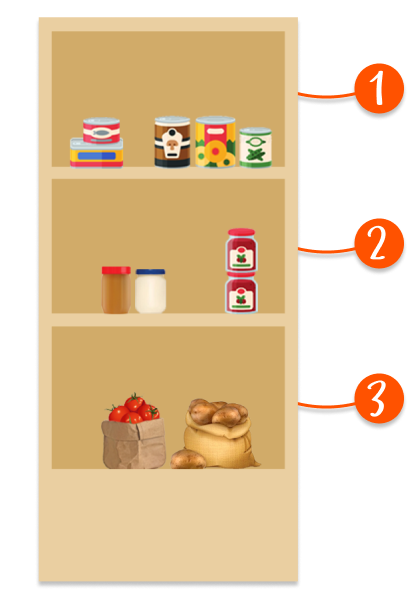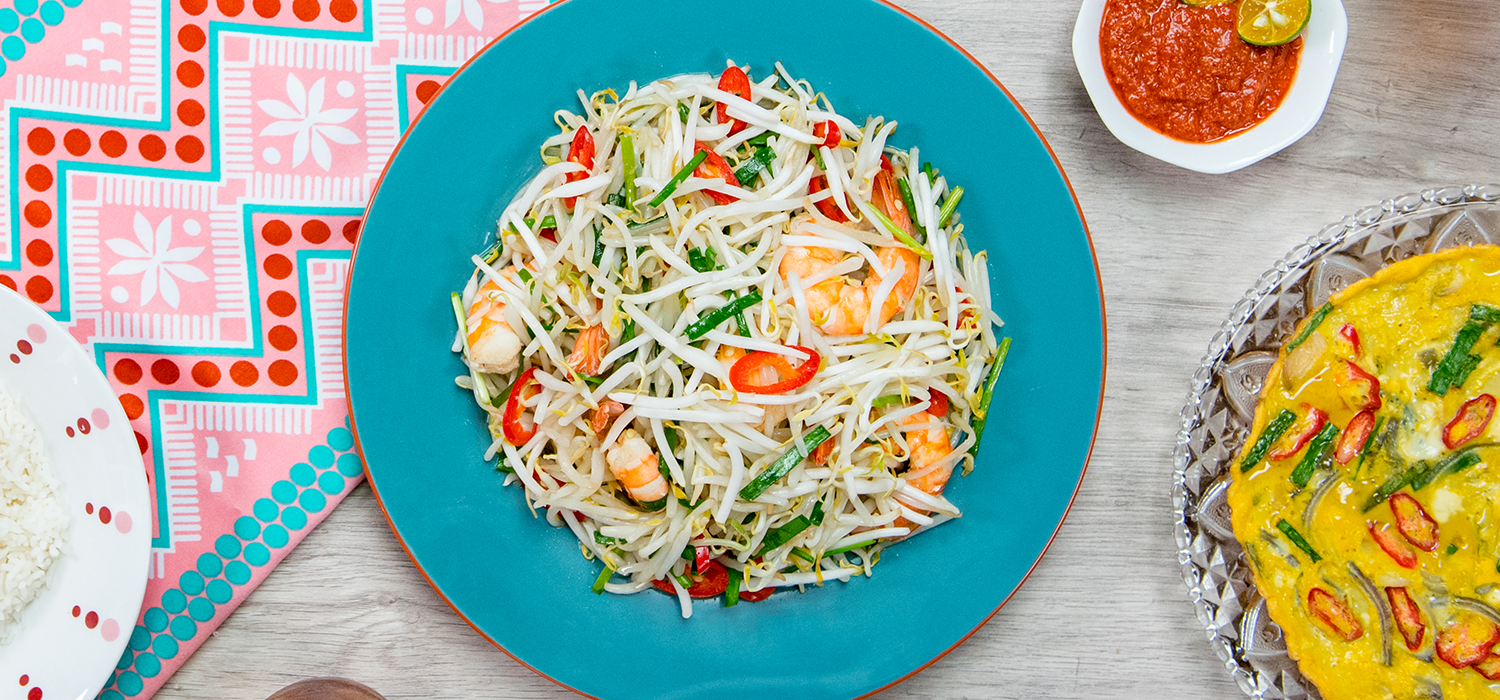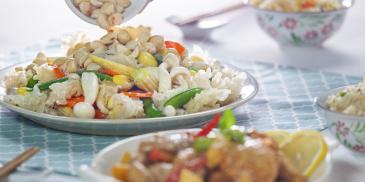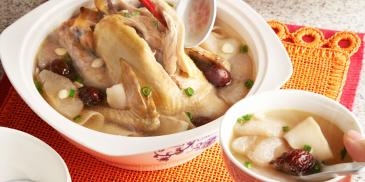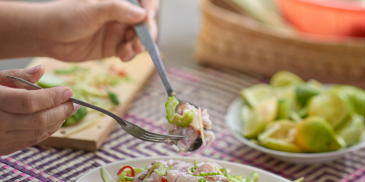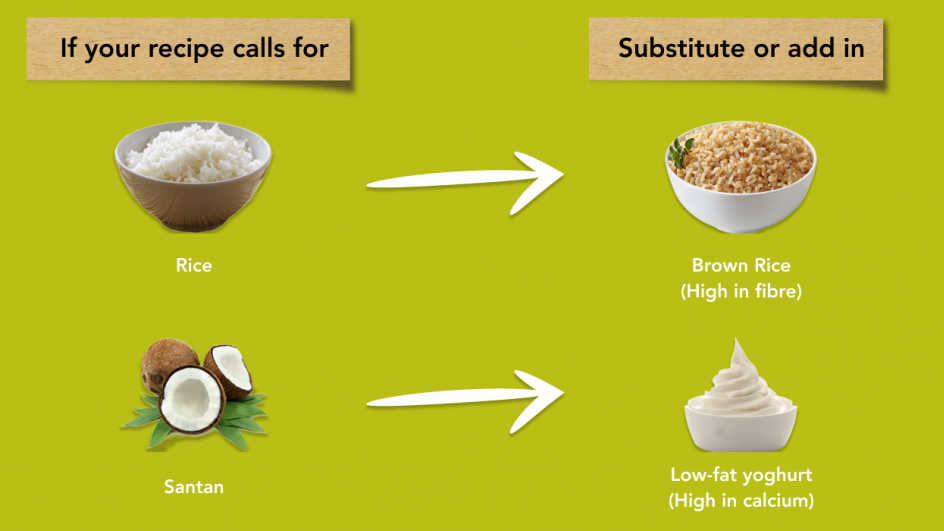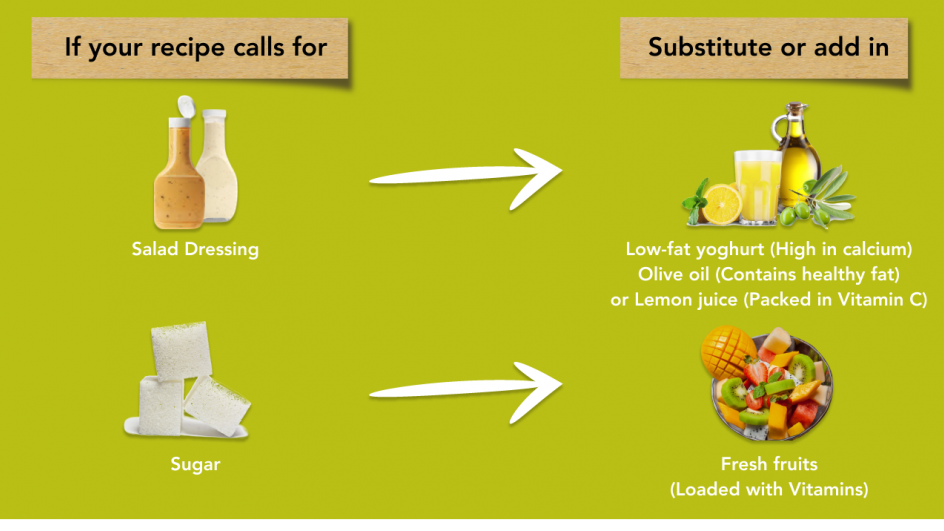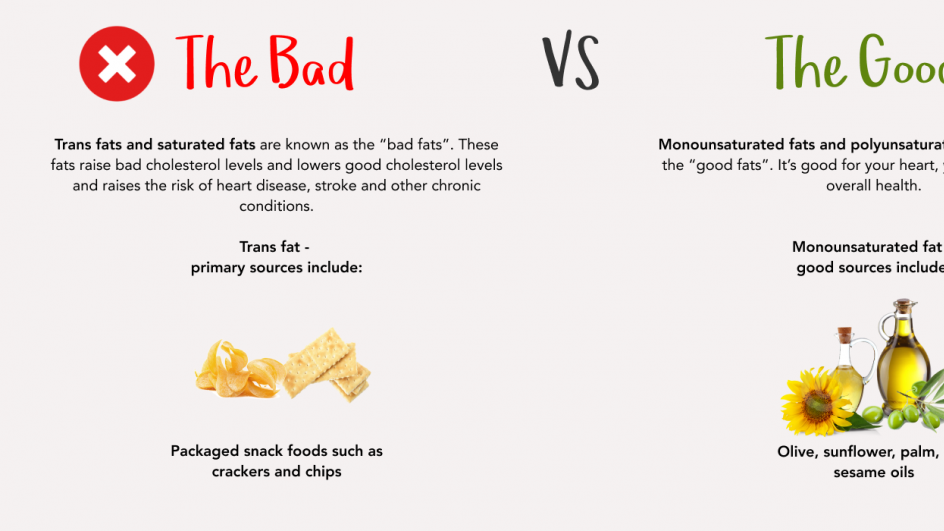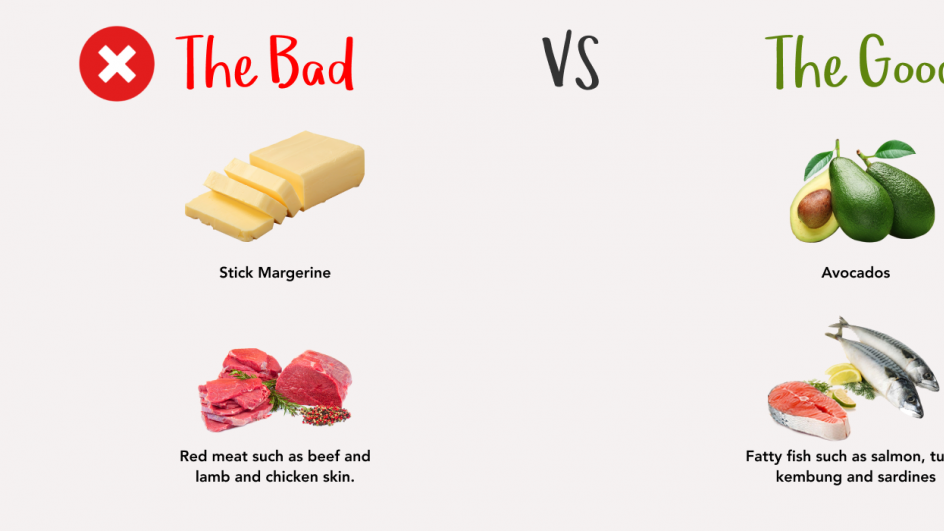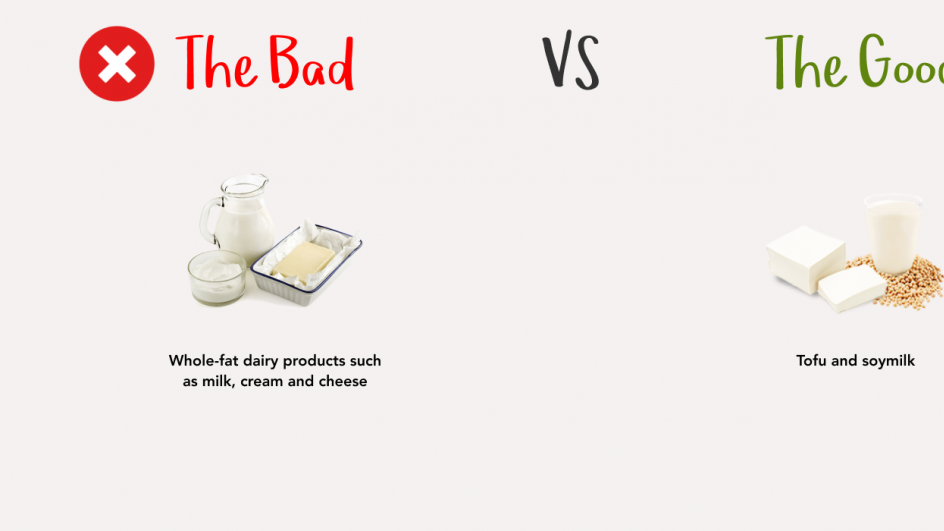
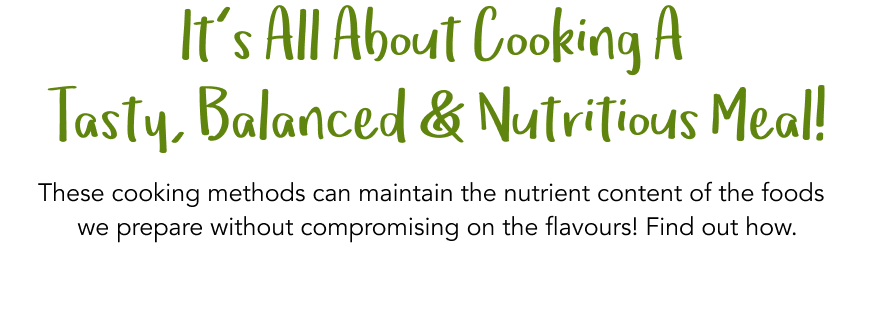
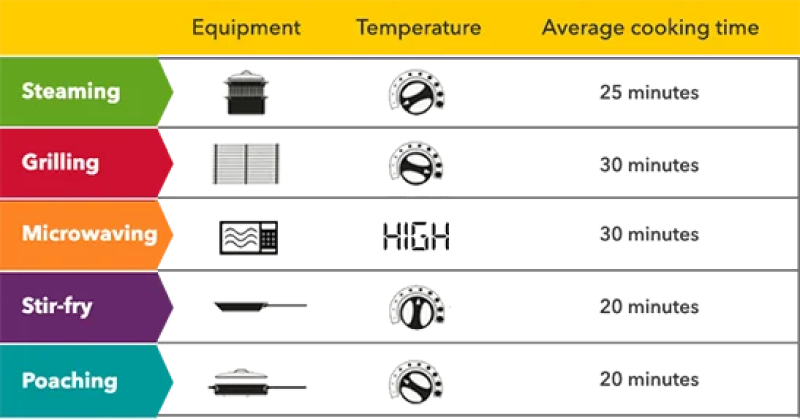
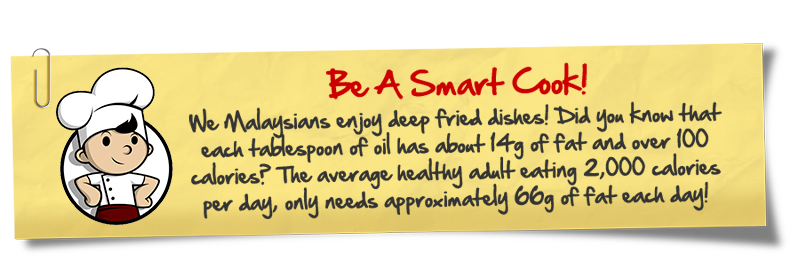

.
Steaming
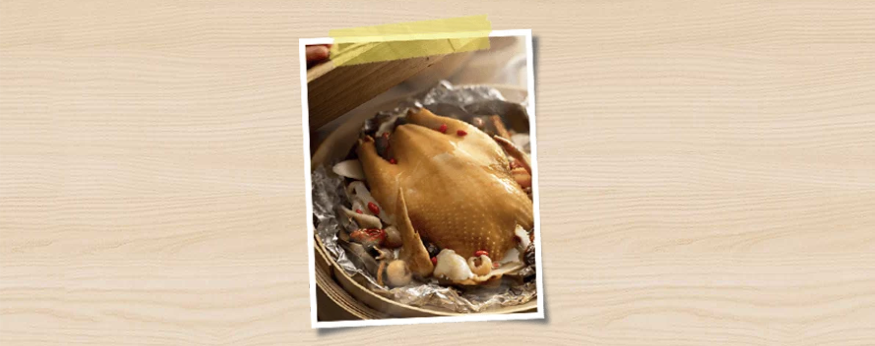
Why Steam?
It’s a simple technique that is commonly done over boiling water.
- Steaming requires only water and heat
- No oil needed, no added fat or calories
- Retains foods’ flavour, colour, shape, texture and nutrients
- Food stews in its own juice
Suitable Ingredients for this Cooking Method
- Vegetables such as carrots, asparagus, broccoli, cauliflower and cabbage
- Fish and shellfish
- Vegetable or lean meat-filled dumplings
Tips on Steaming
- Only place food in when the water is boiling.
- Don’t over-steam! This causes texture breakdown and most importantly, nutrient loss.
- For whole fish, it is recommended that you steam it for 10-15 minutes; vegetables for about 3-5 minutes.
.
Grilling
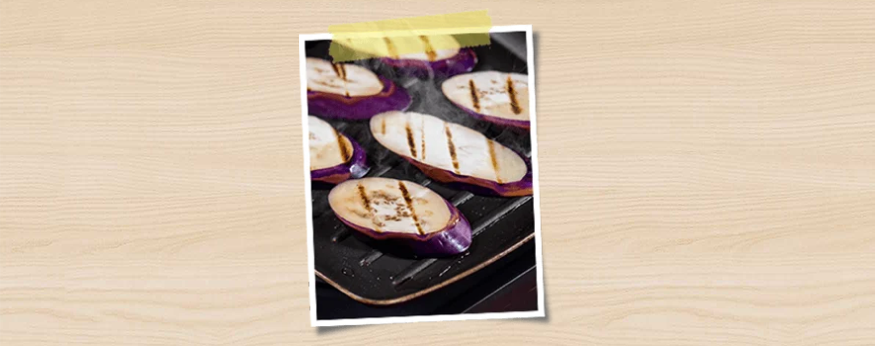
Why Grill ?
Grilling involves cooking food on a rack over a heat source, usually charcoal, wood, gas or electric heated grills.
- Boosts foods’ flavours
- Minimal oil
- Avoids major nutrient loss
Suitable Ingredients for this Cooking Method
- Lean, tender cuts of meat such as beef steak and lamb chops
- Skinless chicken breasts and thighs, kebabs, sausages
- Vegetable slices/chunks like eggplant, capsicums and tomatoes
Tips on Grilling
- Never over-grill your food in order to avoid carbon like flavour that’s unhealthy.
- Use papaya or pineapple as a marinade to tenderise the meat.
.
Microwaving

Why Microwave ?
The microwave oven works by exciting the water molecules in your food, which in turn heats up and cooks the food very quickly.
- No oil needed
- Does a better job of preserving vitamin C and other nutrients
- Cooks food uniformly, retains flavour and texture of food
Suitable Ingredients for this Cooking Method
- Eggs
- Vegetable such as potatoes and broccoli, fish and meat
- Pasta, noodles and rice
Tips on Microwaving
- Stir food to make sure that heat is evenly distributed
- To assist in the circulation of heat, add a tablespoon or two of water
.
Stir-Frying
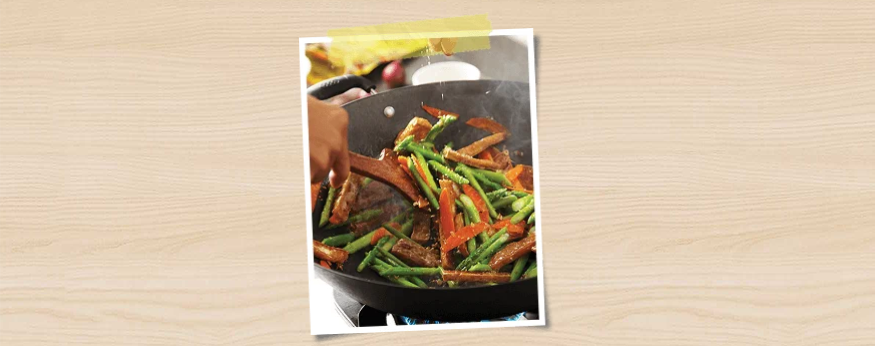
Why Stir-fry ?
Stir-frying involves frying small pieces of food quickly over very high heat in an oiled pan or wok.
- Minimal oil
- Quick cooking allows nutrients to be retained
- Also retains flavour, colour and texture of food
Suitable Ingredients for this Cooking Method
- Lean, tender cuts of meat; prawns, calamari or firm white fish
- Vegetables cut into small pieces
- Rice and noodles
Tips on Stir-frying
- Limit usage by using spray oil.
- Add veggies that will take longer to cook first. For example, add stems of leafy vegetables before adding in the leaves.
- Avoid over cooking vegetables by pre-blanching it before stir frying.
- For stir frying chicken, cut the meat into small pieces to ensure it is thoroughly cooked.
.
Poaching
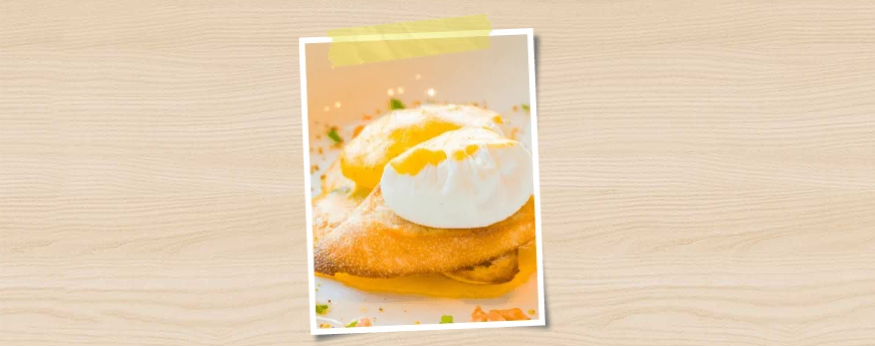
Why Poach ?
Poaching is a cooking method that employs a small amount of liquid that is hot but not bubbling at about 160°F and 180°F (75°C - 80°C).
- No oil needed
- Flavours are infused in the food by seasoning the liquid
- Preserves the beneficial omega-3 fatty acids in fish better
Suitable Ingredients for this Cooking Method
- Eggs
- Chicken and fish
- Fruits such as pears and apples
Tips on Poaching
- Use a thermometer to gauge the temperature of the cooking liquid or watch for bubbling and adjust the heat as necessary.
- Do not allow the food being cooked to touch the bottom of the pan or it may cook too rapidly or burn.
.
No Cooking
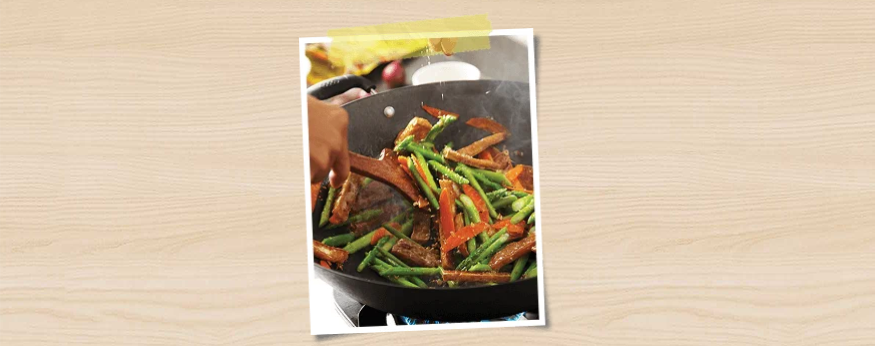
Why Eat Raw ?
Just like what it says – food that is not cooked or raw.
- No oil needed
- Nutrients are not lost
- Taste enhanced in partial cooking; for example, adding raw onions into a cooked dish
Suitable Ingredients for this Cooking Method
- Vegetables such as cucumbers, tomatoes and raw onions
Tips on Eating Raw Ingredients
- Vegetables deliver the most Vitamin C when consumed raw.
- Since this method consists of mostly plant-based ingredients, you consume more vitamins, minerals, and fiber, with no added sugars or fats from cooking.
..
